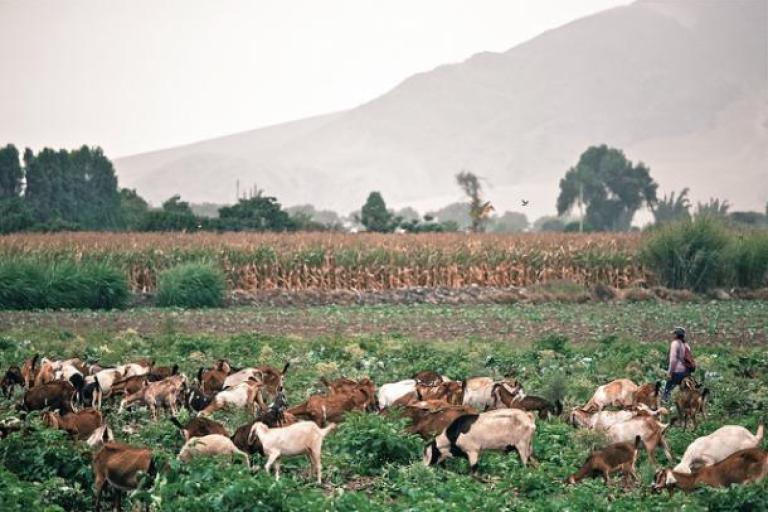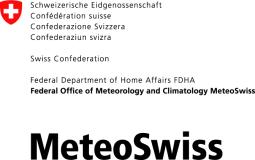

- Global Framework for Climate Services
- Capacity Development
Project background
In developing and emerging countries, climate data are often of poor quality and do not meet the prerequisites for the provision of climate services for political decision-makers. In Peru and the Andean region, the importance of user-tailored climate services is recognized, but this requires better quality climate observations and more expert meteorologists and climatologists. In order to address this need, the Global Framework for Climate Services (GFCS) established the project CLIMANDES (Servicios climáticos con énfasis en los Andes en apoyo a las decisiones) between Peru and Switzerland in 2012. The aim of the project was to increase the number of professionals and students trained in meteorology and climatology in support of the WMO Regional Training Centre (RTC) and to develop climate services for the regions of Cusco and Junin.
Expected outcomes
CLIMANDES Phase I
The GFCS project CLIMANDES-1 (Servicios climáticos con énfasis en los Andes en apoyo a las decisiones) was established between Peru and Switzerland in 2012. The project aimed to increase the number of professionals and students trained in meteorology and climatology in support of the WMO Regional Training Centre (RTC), which was hosted by the National Agricultural University La Molina in Lima. Furthermore, CLIMANDES aimed to develop climate services for the pilot regions of Cusco and Junin. The project consisted of two complementary modules:
Module 1: Improved training in meteorology and climatology
The science curriculum of the RTC was restructured to align with current and future needs in the Andean region. New e-learning tools have been developed for both undergraduate and graduate students of meteorology and climatology. Furthermore, the student exchange within the Andean region – as well as with University of Bern (Switzerland) – was facilitated to enable knowledge exchange and to strengthen the role of the RTC. To improve operational forecasting skills at the Peruvian National Service for Meteorology and Hydrology (SENAMHI), applied training courses were regularly held in the field of practical meteorology. These efforts have helped to contribute to developing more skilled professionals.
Module 2: Improved communication on climate change
State-of-the-art data quality control and homogenization procedures were implemented at SENAMHI. Climate change indices were calculated based on data for the Cusco and Junin regions. To translate the climate information into comprehensive sector-relevant products and services, effective communication channels were identified. Political decision-makers were able to take appropriate adaptation measures which helped result in socio-economic benefits for numerous sectors – agriculture, health and water – and for society at large.
The project was coordinated by WMO and implemented by SENAMHI and the Federal Office of Meteorology and Climatology MeteoSwiss in collaboration with the National Agricultural University La Molina (UNALM), the University of Bern, and Meteodat GmbH. It was financed by the Swiss Agency for Development and Cooperation (SDC). The project ran from August 2012 to July 2015.
CLIMANDES Phase II
After the successful completion of the first phase of CLIMANDES, the second phase launched in 2016 and aims to strengthen the existing partnership ties and exchange of knowledge between the two mountainous countries, Switzerland and Peru. It is a project of the Global Framework for Climate Services (GFCS). The joint project activities support the Peruvian weather service (SENAMHI) and the WMO training centre at La Molina University (UNALM) in Lima. It has a strategic focus on regionalization and is actively supporting transboundary and interregional cooperation.The project consists of three complementary modules:
Module 1: Climate services tailored for agriculture in the Andean region
The project aims to develop high-quality climate services specifically tailored for the agricultural economy in the Andes. As the availability of water is a decisive factor affecting agricultural production, module 1 of CLIMANDES-2 intends to provide improved information on precipitation and droughts. To this end, climate monitoring and seasonal forecasts for the Andes will be generated. The development of climate services in module 1 is linked to module 3, which includes the assessment of user-needs for climate services in the agricultural economy.
Module 2: Improved training in meteorology and climatology
In the context of CLIMANDES-2, academic training in meteorology and climatology in Peru shall be improved. This will ensure the development of high-quality climate services in the Andes. Module 2 will strengthen training at the Peruvian weather service and the WMO training centre (WMO-RTC) at La Molina University. At these institutions, e-learning programs will be developed and introduced into existing and new courses. These training opportunities by SENAMHI and the WMO-RTC will be promoted and made available to other countries in the Andean region.
Module 3: User-dialogue and socio-economic benefits of climate services
Module 3 aims to connect users and providers of climate services in order to match climate information with user needs. By means of a participatory process, the concept of a User Interface Platform (UIP) will aid the development, application and improvement of climate services. Module 3 further discloses the economic value of climate services to political decision-makers in the Andean region, thus ensuring the granting of public funding required for sustainably maintaining and operating the basic infrastructure and climate services provided by SENAMHI.
- Region:
- Region III: South America



